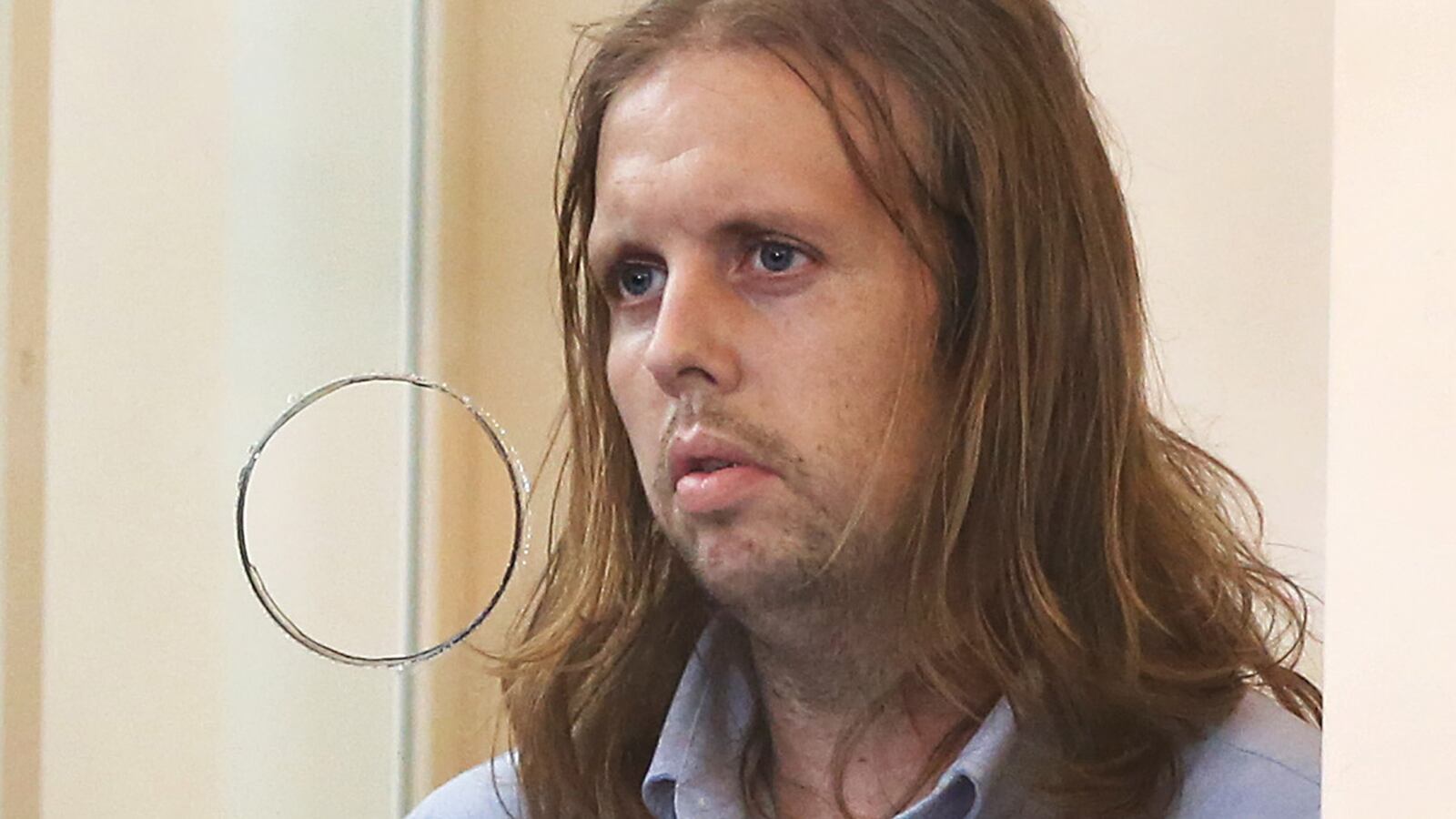“Our daughter is dead. The guy that’s been living in my house murdered our daughter.”
These are the words that Bella Bond’s father Joseph Amoroso said he heard from her mother, Rachelle Bond, when he went to see his child for the first time. The “guy” that had been living in Rachelle Bond’s house was her ex-boyfriend Michael McCarthy, whom prosecutors allege murdered Bella in June, and then kept Bond “captive,” injected her with heroin, and, with her help, disposed of the body in Boston Harbor after storing it in a refrigerator for weeks.
The details of the harrowing “Baby Doe” case are still unfolding. As Susan Zalkind reported for The Daily Beast, there is no forensic evidence in the case at this point and the current allegations are based primarily on Rachelle Bond’s statements. McCarthy’s lawyer has disputed Bond’s account.
But as it unfurls, the case could reignite controversial conversations about child maltreatment and cohabitation. After nightmarish incidents like these, it is often said that a mother’s boyfriend poses the single greatest threat to a child’s well-being. In fact, months before Bella’s remains were even identified, as Heavy uncovered, former America’s Most Wanted host John Walsh speculated that this may be a case in which a mother and a “live-in boyfriend” killed the child and “disposed of the body.”
But is the saying true? Are these cases really so predictable? Or is the “mother’s boyfriend” claim the sort of baseless factoid that we circulate to make sense of the unspeakable acts of which McCarthy and Bond stand accused?
One of the most-frequently cited pieces of research on the subject is a 1992 article in Child Abuse and Neglect by Leslie Margolin. By conducting interviews with nearly 1,000 Iowa women and combing through data from the Iowa Department of Human Services, Margolin found that mother’s boyfriends were responsible for 64 percent of non-parental abuse in single-parent families, despite performing less than 2 percent of non-parental child care.
Faced with this discrepancy, Margolin tried to isolate certain variables to explain it away. Was it solely a function of their gender? No, other male caregivers did not abuse children at nearly the same rate. Was it due to the circumstance of not being biologically related to the child? In part, yes, as “male non-relatives were significantly more abusive than male relatives,” but that still did not account for all of their overrepresentation.
Margolin then analyzed the unique family dynamics created by the boyfriend’s presence in the family, hypothesizing that children’s perception of the boyfriend or his perception of himself as an illegitimate caregiver could lead him to believe that “her children will not listen to him unless force is threatened or used.”
Margolin also examined various intra-family “coalitions” that preceded the instances of abuse in the sample. Generally speaking, either the mother and boyfriend were allied against the child, or the boyfriend perceived himself as being threatened by a mother-child alliance. The most common situation in Margolin’s sample was when “the boyfriend interceded on the mother’s behalf by striking her child” in reaction to some perceived misbehavior.
Noteworthy here, of course, is Suffolk County Assistant District Attorney David Deakin’s claim that Bella was behaving in an “unruly” way on the night of her murder and that McCarthy volunteered to calm her in another room. As The Daily Beast reported, Deakin says that Rachelle Bond then went to check on her daughter and saw McCarthy “either striking or applying pressure” to Bella with his arms.
“She was a demon anyway. It was her time to die,” McCarthy allegedly said at the time.
Much of the task of attorneys and investigators, it seems, will be to untangle the details of the case—the couple’s criminal records, their drug arrests, the claim that both Bond and McCarthy believed Bella was demonically possessed—to determine the actual dynamics of abuse at the core of Bella’s home life. Were the two in a “coalition,” as Margolin might put it, against Bella, or was one more responsible for her death than the other, as the respective charges against them might suggest? Bond was charged as an accessory after the fact and McCarthy received the murder charge.
Further research has since fleshed out Margolin’s 1992 findings about the dynamics of child abuse in cohabiting couples.
A 2001 study in Child Maltreatment found that “the presence of a non-biological father figure in the home should be considered a significant predictor of a future child maltreatment report.” In a sample of 644 mother-child pairs, the authors found no significant difference in maltreatment between mother-father households and single-mother households, but did find that children with a cohabiting “father surrogate” were “twice as likely to be reported for maltreatment after his entry into the home.”
Perhaps tellingly, Bond’s next-door neighbor stopped seeing Bella “around the same time” as a “new boyfriend” appeared, as The Boston Globe reported.
In 2002, a study in Pediatrics looked specifically at cases of fatal child maltreatment over a two-year time period in Missouri and found the risk of fatal maltreatment was not increased for children living with a single parent, but that it was raised eight times if they were living with unrelated adults, “primarily in households including biologically unrelated adult males and boyfriends of the child’s mother.”
Again, these cases are not necessarily determined exclusively by the boyfriend’s gender. After all, according to 2013 statistics from the U.S. Department of Health and Human Services (PDF), mothers acting alone were responsible for 40 percent of child abuse, compared to 20 percent for fathers. Mothers were also responsible for over twice the percentage of child fatalities as fathers. Bear in mind that women are more likely to be a child’s primary caretaker.
What the research strongly suggests, however, is that the risk of child maltreatment is increased by complex family dynamics. Less than half of U.S. children, according to Pew, live in two-parent, first-marriage households.
But this research also lends itself to controversy. Conservative and family-focused groups like the Heritage Foundation can wield it to argue that marriage is “still the safest place for women and children” and advocate for a return to traditional values. Others might counter that the economic and educational advantages of marriage—and not marriage itself—are what help children flourish.
The data can also be used to further stigmatize single mothers and, in fact, the 2001 father surrogate study warned against this conclusion: “Rather than penalizing or stigmatizing single mothers, providing greater services to them and greater support to mothers with live-in partners may reduce the risk of child maltreatment reports.”
The authors recommend that child protective services should “focus more of their attention on the high-risk relationship between a surrogate father and the children.”
Was the Department of Children and Families (DCF) focused on Bond’s high-risk situation? The DCF had intervened in Bond’s family before, revoking parental rights for two of her other children between 2001 and 2006, both of whom were adopted out.
As a local CBS station reported, the DCF also responded to neglect situations involving Bella twice, once in 2012 and again in 2013—presumably before the start of her relationship with McCarthy. Bella’s case was left closed both times. In fact, after the body was found, DCF did not identify the Bond family as a likely culprit because Bella’s case was not open.
Many say the DCF is underfunded and its workers have staggering caseloads.
Whether the DCF could have seen this situation coming or identified the body sooner is a question that is now being asked internally. Child welfare experts are already saying that Bella Bond should have been removed before this happened. As the Globe reported Sunday, Massachusetts Governor Charlie Baker promised that the DCF would examine the case and update its risk-assessment and intake systems.
A DCF spokesperson added Monday that “investigations into the recent tragedies revealed systemic problems within the department and the Baker administration is taking action to improve intake procedures, increase staffing, and tackle several other reforms to how the department operates.”
The fact that Bella Bond family’s situation—a mother with a criminal record, a lengthy DCF history, and a live-in boyfriend—was inherently risky only adds urgency to Susan Zalkind’s question posed in The Daily Beast last week: “How could the state not know ‘Baby Doe’?”
As Globe columnist Joan Vennochi put it this week: “Good question.”






